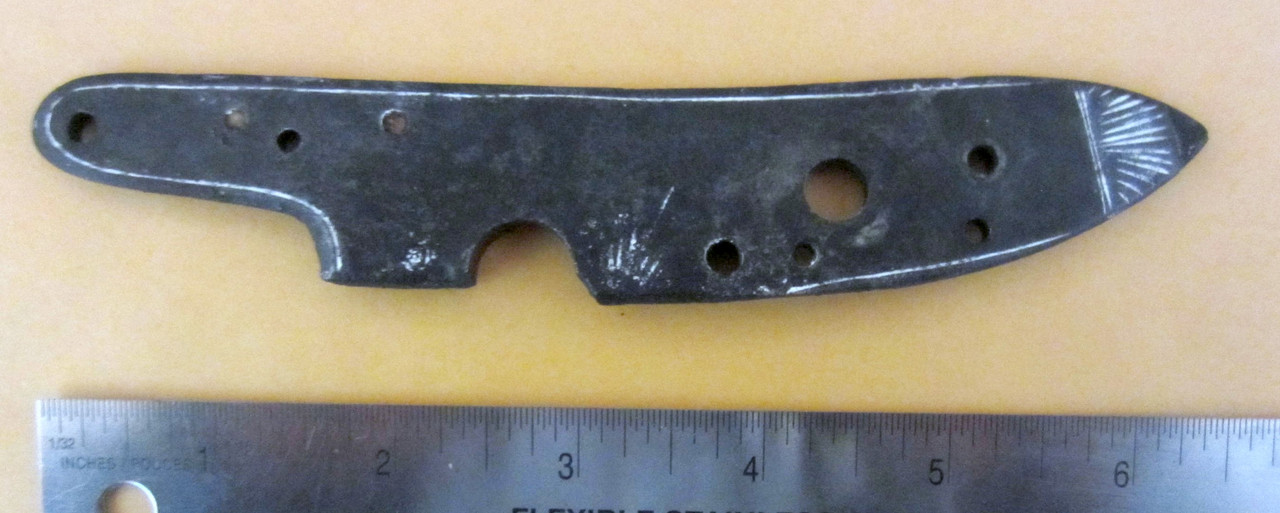I know it is a stretch, but am exploring every avenue I can think of. Using a broad brush stroke, I am thinking somewhere between 1725 and 1825 and something likely to be encountered in America. That covers a lot of ground.
Ideally, I would like to find a reference with a searchable image.
Here is what I know and think I kinda maybe know:
Originally flint and currently percussion and 6 1/4" long by 1 3/16" tall
Based on the proximity of the border to the edge and a noticeable change in the draft between "A" and "B" and "C" and "D", I would say the plate has been reshaped in those areas. On that terrible photo, I have attempted to sketch in what the plate MIGHT have originally looked like, but am likely way off the mark.
EDITThere is an assembly mark consisting of three notches filed into the edge of the plate ahead of the frizzen area.
I have blown pics of 2nd and 3rd model Bess locks up to full scale (assuming 6 1/4" lengths) and laid this plate on the photos. The overall fit, the tumbler screw and the bridle and sear screws line up reasonably well, but the forward screw hole locations do not match. Also, the internals don't appear to be a reasonable match. I was thinking possibly Bess lock filed flat. Filed flat is probably a very unlikely scenario.
The center-to-center distance between the lock nails is just a hair under 3 1/2".
I suspect that engraving

might be later doodling.
Currently stumped




Thanks for looking

